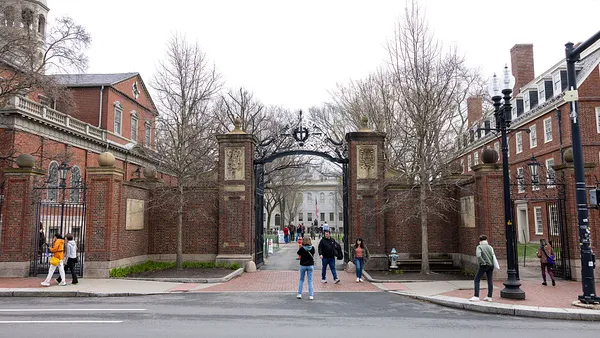Community college completion rates, on average, are not very high. Many students enroll in community colleges to take cheaper classes closer to home than they can get at a four-year program of interest. They transfer before earning a degree. Others simply fail on their way to an associate degree or certificate. They get frustrated with developmental education courses that don’t get them any closer to their graduation, they have trouble with transportation or childcare, or they stop taking classes to work more hours.
The reasons are many — and, across the board, men of color have significantly worse outcomes than their white peers.
J. Luke Wood studies student outcomes at community colleges as the associate professor of community college leadership and the director of the doctoral program in community college leadership at San Diego State University. His research first centered on the experiences of black men at community colleges, and in the last two years has expanded to Latino and Southeast Asian men. Wood said he and his colleague Frank Harris III plan to incorporate the experiences of Native American and Pacific Islander men into their work in the coming years.
Nationwide, community college completion data shows 27% of white men earn a certificate or degree or transfer within three years of entering a community college. For black men, the number drops to 17%, and for Latinos, it’s 15.4%. Just 5% of black men who go to community college part-time finish or transfer in three years. And the numbers hardly budge when the timeframe is extended to six years.
While most community colleges know they have a problem serving men of color, Wood finds the response is often to launch targeted interventions, either focused on mentoring or professional skills development. But these programs are not scalable. They don’t have the large-scale impact campuses must achieve to properly serve their entire populations.
“Programs that focus on students, that’s the wrong place,” Wood said. “They’re starting interventions that focus on remediating student deficits rather than training educators to work with them.”
Wood has six key recommendations for campus leaders looking to improve their outcomes for students of color — strategies that end up improving the student experience across gender and racial/ethnic lines.
-
Offer institutional-level professional development for all faculty and staff, including part-time employees. Wood developed a one-week, online training with Harris that includes, among other elements, an intensive focus on the role masculinity plays in student experiences and outcomes, as well as strategies for educators in response.
-
Hire faculty who have a proven record of success in working with students from diverse backgrounds. Wood recommends asking more nuanced questions in the hiring process to get at this experience, including requesting examples of how candidates advocated for or supported diverse learners in their career.
-
Get greater representation of full-time faculty in developmental education courses. Students in these courses need educators with the most expertise and experience, yet they often are taught by adjuncts who have less experience and are cobbling together full-time work through teaching at multiple institutions.
-
Overhaul basic skills testing. Students who test low on all areas could spend three years at a community college before ever taking a course that counts toward their degree. Graduation rates among these students are abysmal, and colleges need to figure out new ways to get them up to speed for college-level coursework.
-
Develop or improve early alert systems. Many colleges do not have campuswide early alert systems at all. They should get them. There is room for improvement when “early” alerts go out halfway through the semester — far too late — or when faculty and students are not trained on how to use the systems or follow up on the alerts.
-
Make supports intrusive. As Wood says, “If it’s important, make it mandatory.” If tutoring is proven to help students succeed, don’t just recommend that students visit the campus tutoring center — require it. The same goes for counselor/advisor meetings with students.
Community colleges with very good programs for men of color include Baltimore County Community College, Maricopa Community Colleges in Arizona, and Pulaski Technical College in Arkansas.
Addressing inequities across groups became mandatory at California State Community Colleges through Title 5 of the California Code of Regulations’ focus on disproportionate impact. Minnesota is poised to implement a similar process. State influences like these are important, Wood says, but the individual colleges that have been most successful are the ones where a campus leader has made this a priority.
Would you like to see more education news like this in your inbox on a daily basis? Subscribe to our Education Dive email newsletter! You may also want to read Education Dive's look at higher ed CIOs' campus tech predictions for 2016.












